Discover 20 hidden attractions, cool sights, and unusual things to do in Ferrara (Italy). Don't miss out on these must-see attractions: Castello Estense, Palazzo dei Diamanti, and Palazzo Prosperi-Sacrati. Also, be sure to include Ferrara Cathedral in your itinerary.
Below, you can find the list of the most amazing places you should visit in Ferrara (Emilia-Romagna).
Table of Contents
Castello Estense
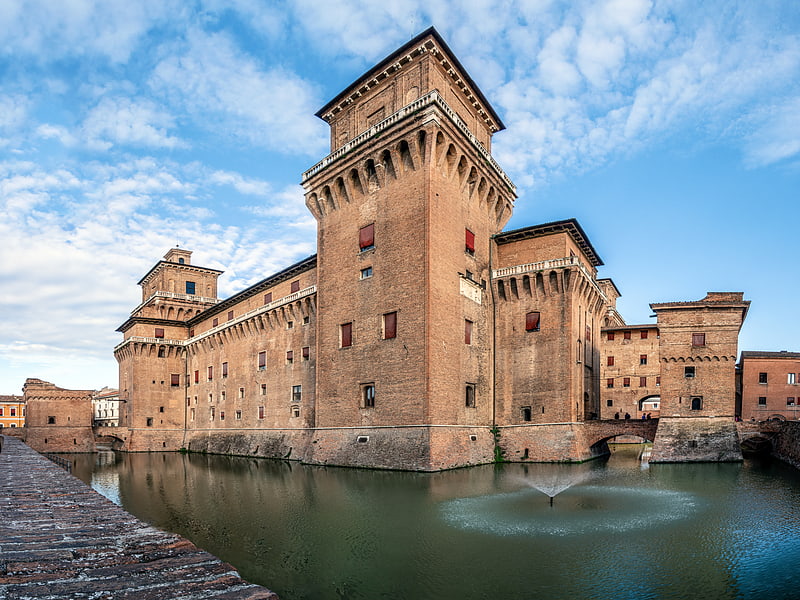
Landmark 14th-century castle and museum. The Castello Estense or castello di San Michele is a moated medieval castle in the center of Ferrara, northern Italy. It consists of a large block with four corner towers.[1]
Address: Largo Castello, 1, 44121 Ferrara
Palazzo dei Diamanti

Renaissance palace with art exhibitions. Palazzo dei Diamanti is a Renaissance palace located on Corso Ercole I d'Este 21 in Ferrara, region of Emilia Romagna, Italy. The main floor of the Palace houses the Pinacoteca Nazionale di Ferrara.[2]
Address: Corso Ercole I d'Este, 21, 44121 Ferrara
Palazzo Prosperi-Sacrati
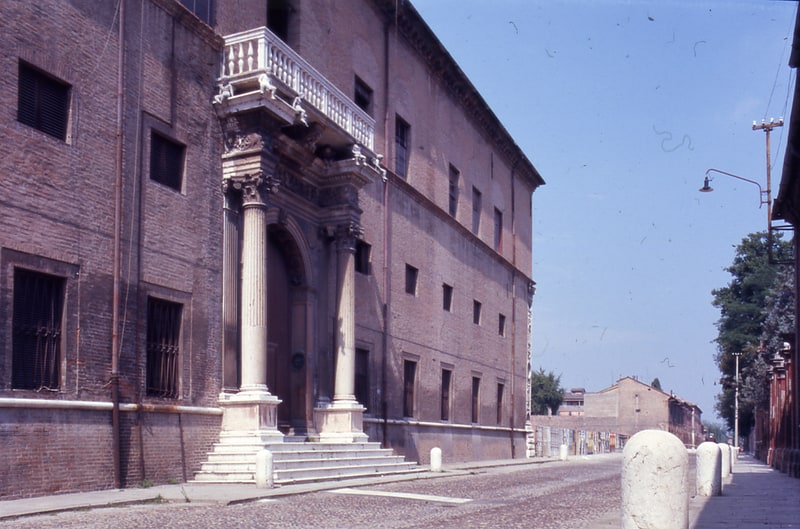
Palace in Ferrara, Italy. Palazzo Prosperi-Sacrati is a Renaissance-style palace located on Corso Ercole I d'Este in Ferrara, region of Emilia Romagna, Italy. The palace with its protruding marble portal and balcony, and with a corner balcony and pilaster on the corner with Corso Biagio Rossetti, was designed and built in 1493-1498 by Biagio Rossetti as part of the Addizione Erculea. It is flanked on the ground floor by marble pilasters. It is across the Corso Rossetti from the lateral facade of the Palazzo dei Diamanti.[3]
Ferrara Cathedral

Also known as: Cattedrale di San Giorgio
Striking 1100s Romanesque cathedral. Ferrara Cathedral is a Roman Catholic cathedral and minor basilica in Ferrara, Northern Italy. Dedicated to Saint George, the patron saint of the city, it is the seat of the Archbishop of Ferrara and the largest religious building in the city.
The cathedral stands in the city centre, not far from the Palazzo Comunale and the famous Castello Estense and is connected to the Archbishop's Palace by a covered passage.[4]
Address: Piazza della Cattedrale, 44121 Ferrara
Delizia di Belriguardo
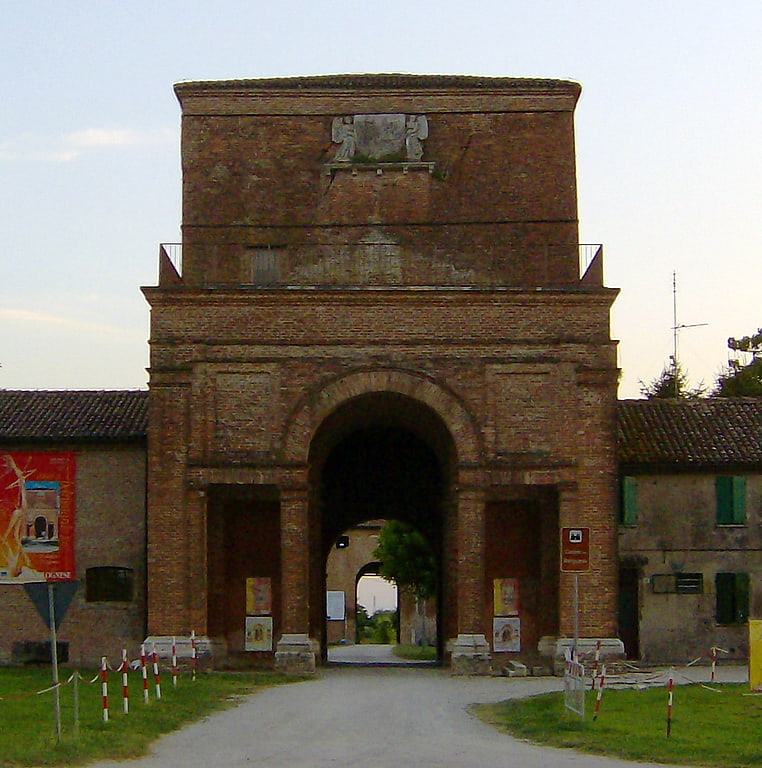
Historical landmark in Voghiera, Italy. Delizia di Belriguardo is the headquarters of the Museo civico di Belriguardo. It was built by Niccolò III d'Este. Lucrezia Borgia stayed here frequently.
At the end of the 1400s, Sabadino degli Arienti wrote a description of the palazzo. In 1493, Ludovico il Moro wrote a letter to Beatrice d'Este saying:
...Non voria per cosa del mondo esser manchato de venire perché ho veduto tanto grande casa, tanto bella et bene intesa et cussì ornata de picture excellentissime, che non credo ch’el mondo abia una simile...[5]
City Theater

Also known as: Teatro Comunale
Opera house in Ferrara, Italy. The Teatro Comunale in Ferrara is an opera house, located in the Italian region of Emilia-Romagna, and built between 1786 and 1797 with seating for 990. Privately owned theatres with limited seating capacity had existed in the city for many years, but the arrival of Cardinal Spinelli, the new papal envoy, in 1786 spurred the construction of a new public theatre under the architects Cosimo Morelli and Antonio Foschini. However, their disagreements led to conflicting design concepts regarding the elliptical shape of the auditorium which were resolved through compromise. The theatre was finally ready for its inaugural presentation of Portogallo’s Gli Orazi e i Curiazi on 2 September 1798.
The theatre is noted for staging the premiere of an early opera written by Gioacchino Rossini at the age of twenty, Ciro in Babilonia in March 1812.
Between 1825 and 1826 some renovation work was required, followed by some more in 1850, creating the theatre as seen today. In 1928 an orchestra pit was added. During the Second World War the theatre suffered badly from Allied bombing and, although it opened occasionally in the immediate post-war years, it closed in 1956, not to re-open until further restoration took place in the early 1960s and then once again between 1987 and 1989.
The present-day auditorium has 5 tiers, while the ceiling displays four scenes from the life of Julius Caesar. It now seats 890.
Following the Second World War and subsequent renovations, performances were fairly sporadic, but after the creation of “Ferrara Musica” in 1988, more operatic performances have been staged, some of obscure or little-known operas, and other, more popular works alongside other theatres in the Emilia-Romagna region. The conductor Claudio Abbado usually presents one opera every season and the 2007 schedule shows four operas being staged between February and April, along with dance and theatre and other events of various kinds.
Between January and April 2008 the four operas performed were Motezuma by Vivaldi, Maria de Buenos Aires by Astor Piazolla, Tosca by Puccini and Lucia di Lammermoor by Donizetti. The theatre's 2013/14 season shows performances of four operas.[6]
Address: Corso Martiri della Libertà, 5, 44121 Ferrara
Palazzo Roverella
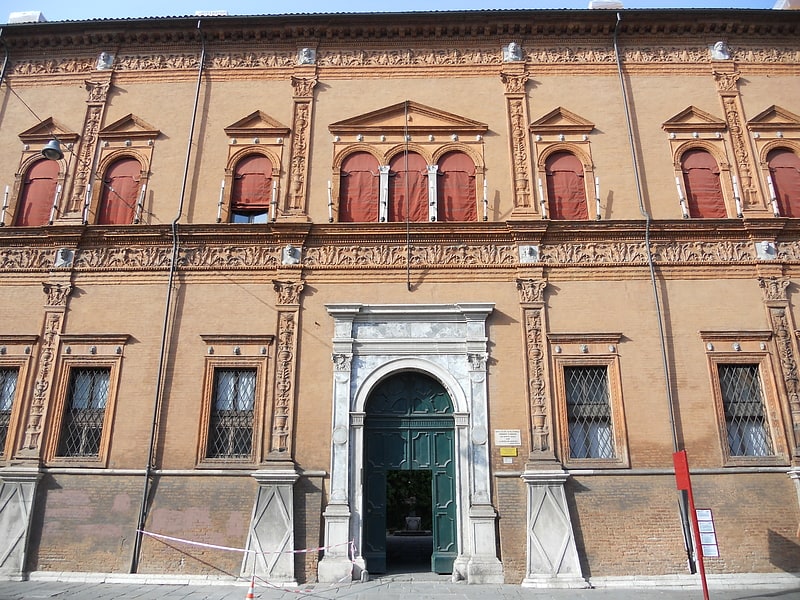
Palace. The Palazzo Roverella is a Renaissance-style palace located at the corner of Corso della Giovecca #47, at the intersection with Via Boldini, in Ferrara, Italy.
The design and construction of the palace (1508) is attributed to Biagio Rossetti, as commissioned by Gaetano Magnanini, secretary of Duke Alfonso I d'Este. It is built at the land utilized to build the urban expansion of the Addizione Erculea. The palace became property of the Roverella family in the 19th century. The varying rhythm of placement of the windows; and the grotteschi-decorated terra-cotta pilasters with geometric marble bases, give the facade an early-Mannerist-style. Above the pilasters are relief busts.
The palace should not be confused with a Palazzo Roverella, Rovigo, also attributed to Rossetti, and which now serves as the town painting gallery.[7]
Address: Corso Giovecca 47, Ferrara
Museum of Italian Judaism and the Shoah
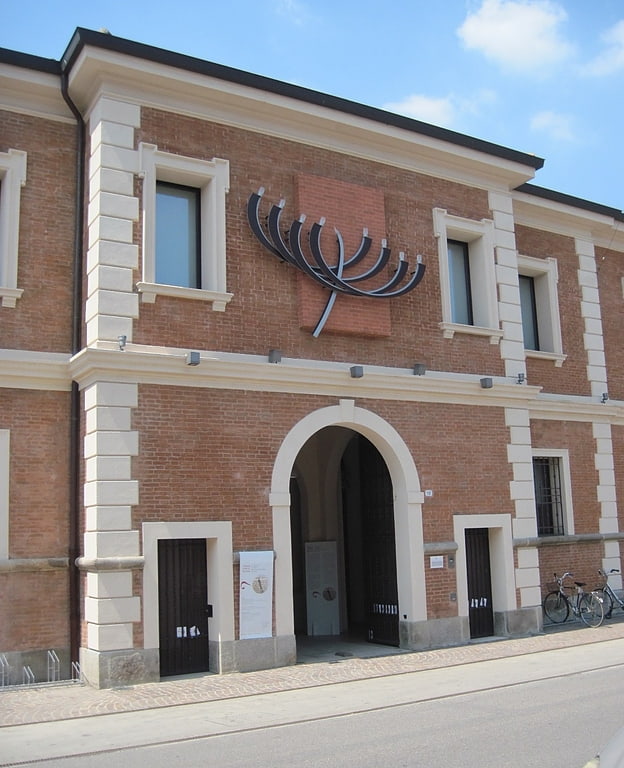
Museum in Ferrara, Italy. The Museum of Italian Judaism and the Shoah is a public history museum in Ferrara, Italy. It opened in 2017, and traces the history of the Jewish people in Italy starting from the Roman empire through the Holocaust of the 20th century. Chartered by the Italian government in 2003, MEIS contains over 200 artifacts and exhibits that proceed chronologically through the periods of Jewish history in Italy. The museum is continuing to expand through the year 2021.[8]
Address: Via Piangipane, 81, 44121 Ferrara
San Carlo Borromeo
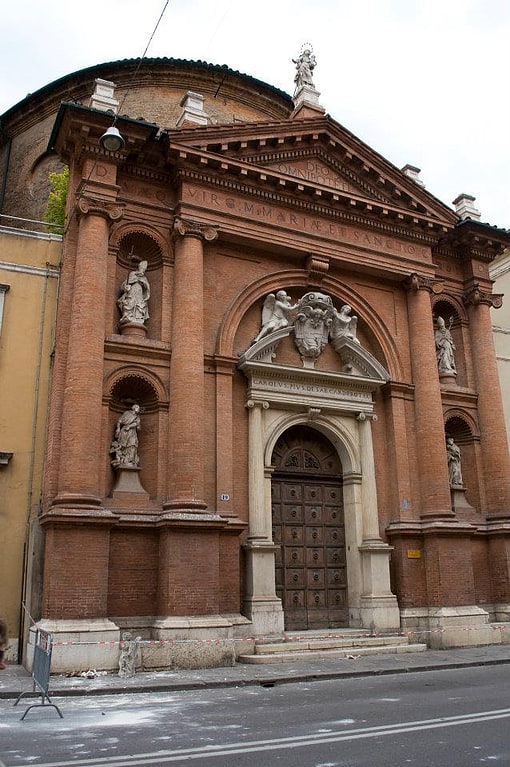
Also known as: Chiesa di San Carlo
Catholic church in Ferrara, Italy. San Carlo Borromeo is a Baroque, Roman Catholic church located on Corso Giovecca #191, a block east of the Castello Estense in Ferrara, region of Emilia-Romagna, Italy.[9]
Address: Corso della Giovecca 19, 44121 Ferrara
Hotel Santo Stefano
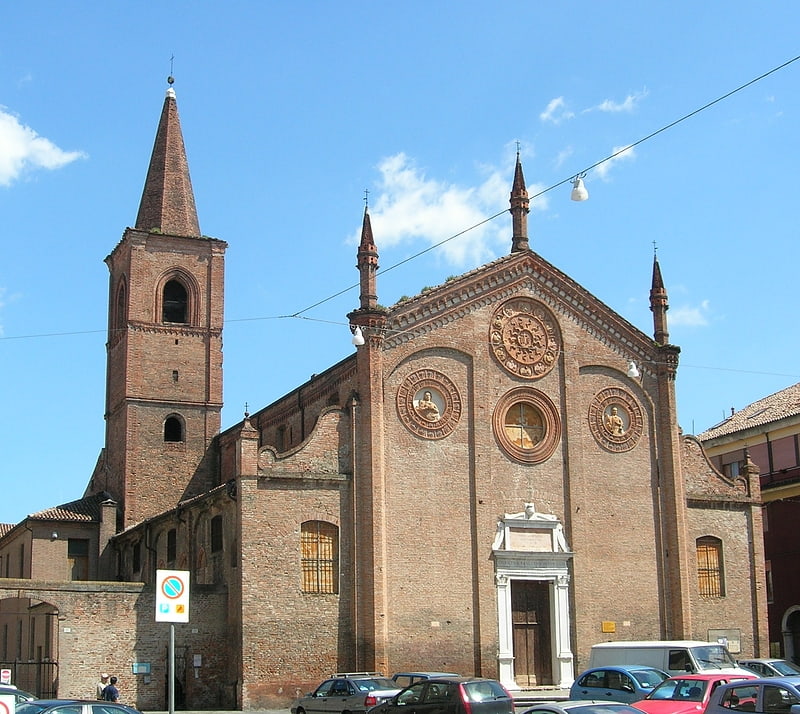
The church of Santo Stefano or San Stefano Protomartire is among the oldest in Ferrara, Italy. It is located on Piazetta Sant'Etienne, a few blocks west of the Ferrara Cathedral.[10]
Palazzo Schifanoia

Palace-turned-museum with historical art. Palazzo Schifanoia is a Renaissance palace in Ferrara, Emilia-Romagna built for the Este family. The name "Schifanoia" is thought to originate from "schivar la noia" meaning literally to "escape from boredom" which describes accurately the original intention of the palazzo and the other villas in close proximity where the Este court relaxed. The highlights of its decorations are the allegorical frescoes with details in tempera by or after Francesco del Cossa and Cosmè Tura, executed ca 1469–70, a unique survival of their time.
This palace forms part of a catalogue of pleasure palaces for the Este family, including the following:
- Delizia di Belriguardo a Voghiera
- Delizia del Verginese a Portomaggiore
- Castello di Mesola a Mesola
- Villa della Mensa a Sabbioncello San Vittore
- Delizia di Benvignante ad Argenta, Italy
The Palace of Belfiore which once held the Studiolo of the Palazzo Belfiore, no longer exists.[11]
Address: Ferrara, Via Scandiana, 23
Palazzo Bentivoglio
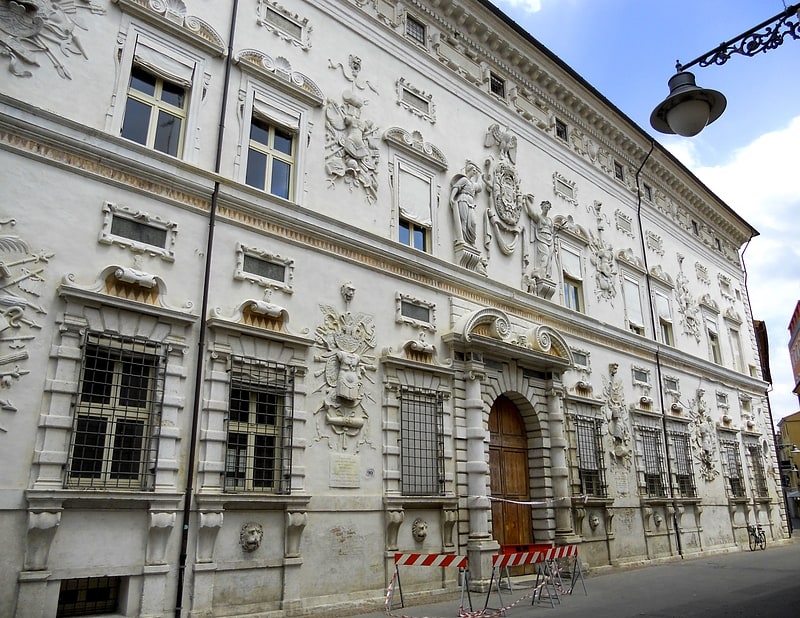
Palace in Ferrara, Italy. The Palazzo Bentivoglio is a late-Renaissance palace located on Via Garibaldi in central Ferrara, Region of Emilia-Romagna, Italy[12]
Address: Via Garibaldi 90, Ferrara
Certosa of Ferrara
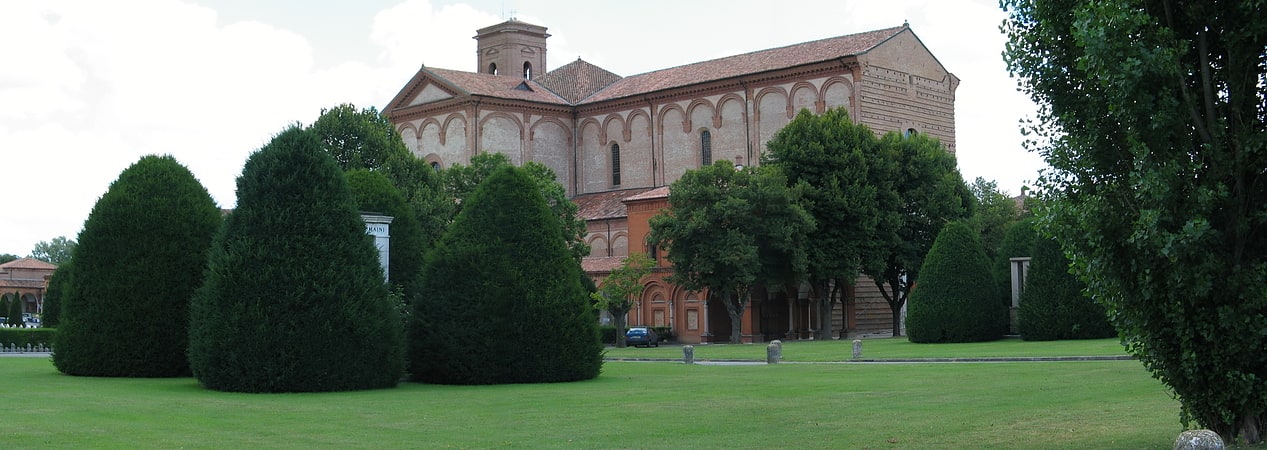
Also known as: Cimitero monumentale della Certosa di Ferrara
Cemetery. Ferrara Charterhouse, of which the present Church of San Cristoforo alla Certosa was previously the monastic church, is a former charterhouse or Carthusian monastery built in Renaissance style, located on Piazza Borso 50 in Ferrara, Region of Emilia-Romagna, Italy. The monastery was suppressed in the time of Napoleon, but the church was reconsecrated in 1813 and remains in use. The site also accommodates a large municipal cemetery, which was established in 1813.[13]
Address: Via Borso, 1, 44121 Ferrara
San Francesco
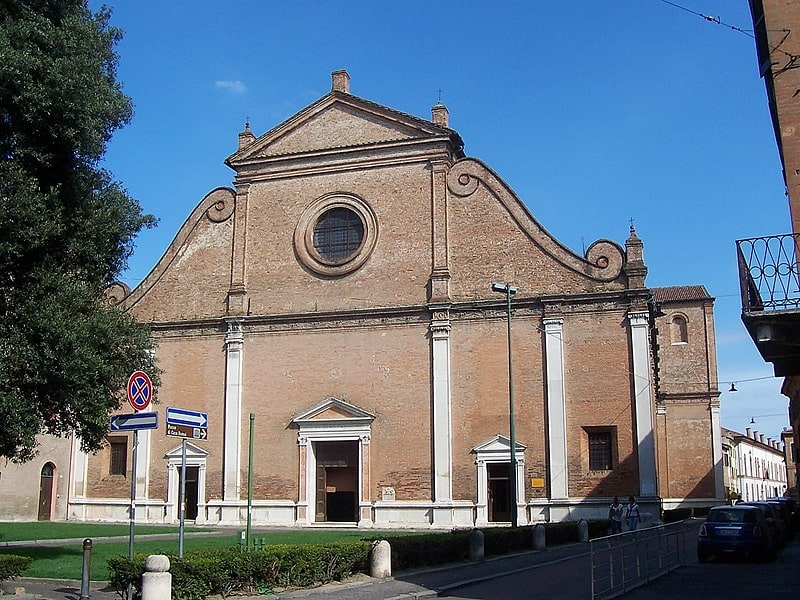
Basilica in Ferrara, Italy. San Francesco is a late-Renaissance, Roman Catholic minor basilica church located on via Terranuova in Ferrara, region of Emilia-Romagna, Italy.[14]
Address: Piazza S. Francesco, 44121 Ferrara
Monastero di Sant'Antonio in Polesine
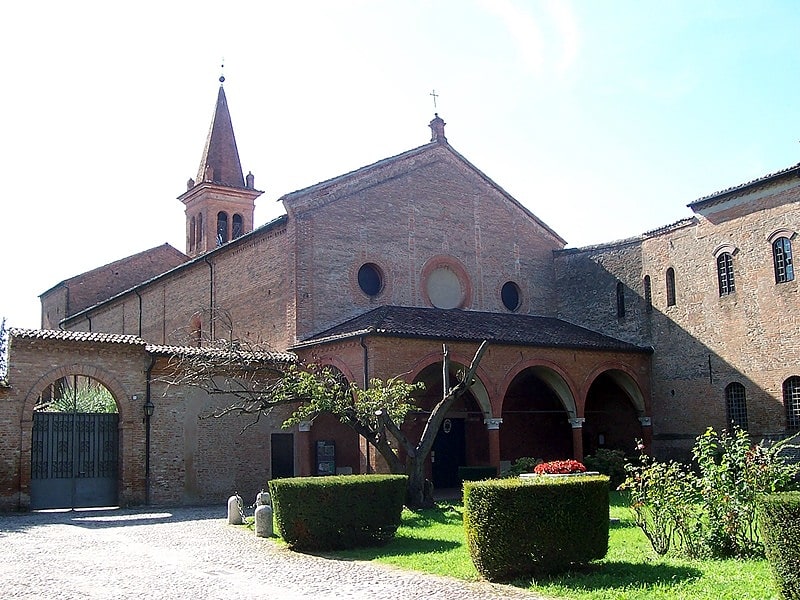
Monastery in Ferrara, Italy. Sant'Antonio in Polesine is a Catholic monastic complex of the nuns of the Order of Saint Benedict located in Ferrara, Italy and dedicated to Anthony the Great. Administratively, it is part of the deanery of Ferrara, part of the Archdiocese of Ferrara-Comacchio.[15]
Address: Vicolo del Gambone, 44121 Ferrara
Chiesa di Santa Maria in Vado
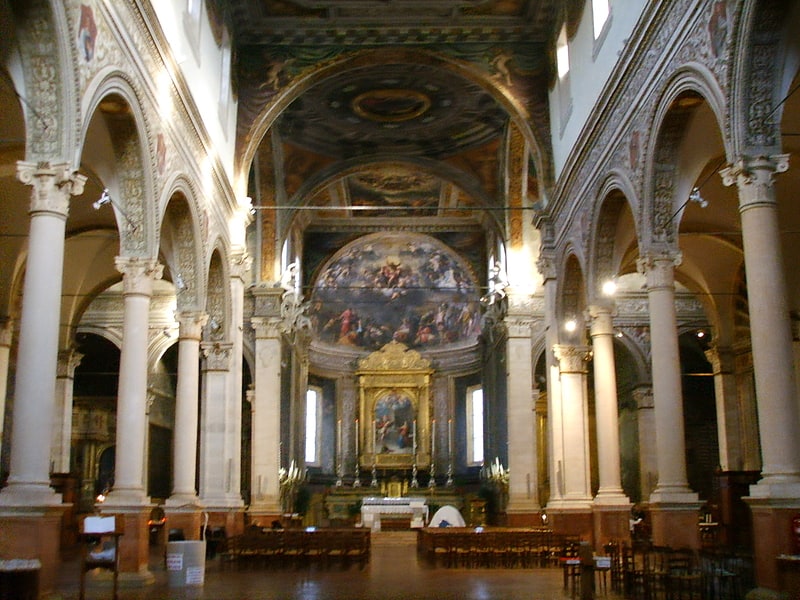
Sanctuary in Ferrara, Italy. Santa Maria in Vado is a church located on Via Borgovado number 3 in Ferrara, Region of Emilia-Romagna, Italy.[16]
Address: Via Borgovado, 3, 44121 Ferrara
Palazzo Bevilacqua-Costabili
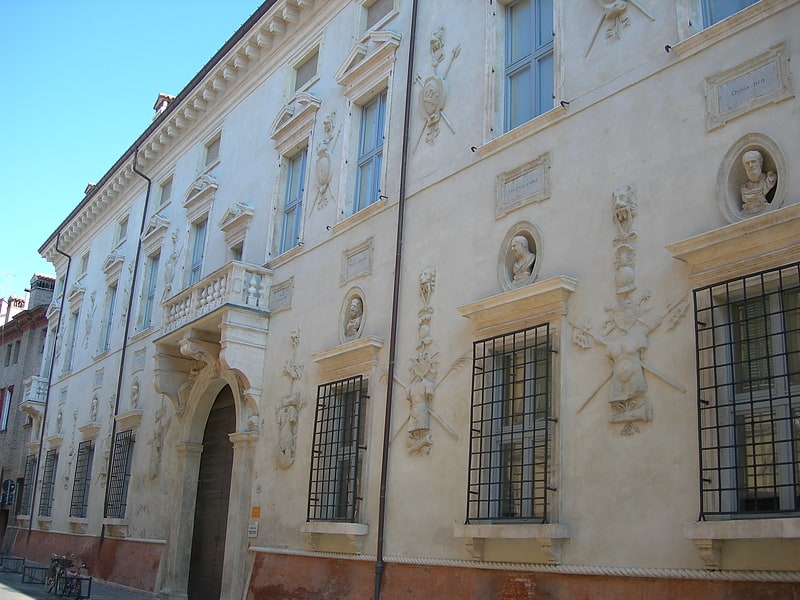
Also known as: Palazzo Bevilacqua Costabili
Historical landmark in Ferrara, Italy. The Palazzo Bevilacqua-Costabili is a Renaissance palace located on Via Voltapaletto 11 in central Ferrara, Region of Emilia-Romagna, Italy. It should not be confused with the Palazzo Bevilacqua in Verona, designed by Michele Sanmicheli.[17]
Stadio Paolo Mazza
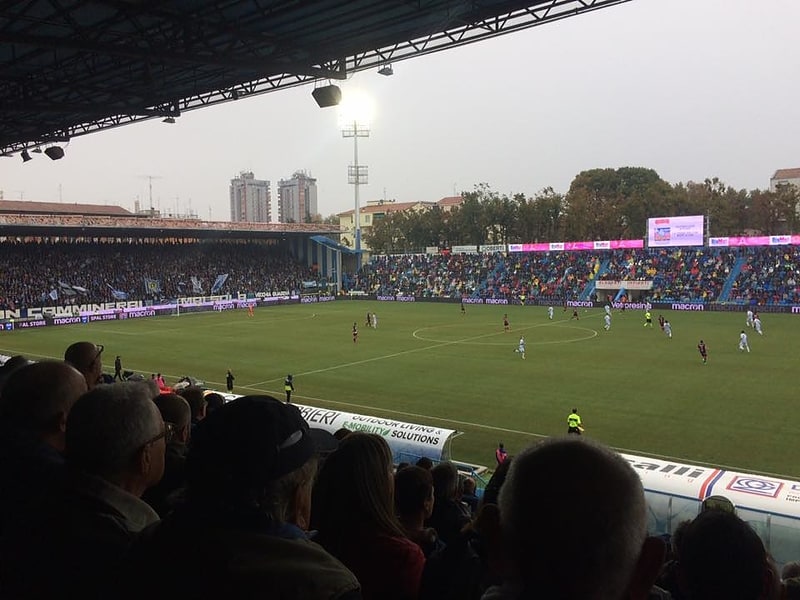
Stadium in Ferrara, Italy. Stadio Paolo Mazza is a multi-use stadium in Ferrara, Italy. It is currently used mostly for football matches and is the home ground of SPAL.
Located in the Rione Giardino, west of Ferrara within the city walls, it was built in the immediate vicinity of the area where the former playground of SPAL, Campo di Piazza d'Armi, stood since 1919. The municipal stadium of Ferrara is the fifth oldest Italian ground still in operation.
It was opened in September 1928 as Stadio Comunale; initially, it had a capacity of 4,000. It assumed its current name in February 1982 to honor the former president of the club Paolo Mazza, who died two months earlier.
In concomitance with the access of SPAL to Serie A, in 1951 it was subjected to a heavy restructuring that brought capacity to 25,000. Between 1960s and 1980s it was renovated again, stabilizing the number of possible spectators to 22,000 until mid-2000s.
From 2005 to 2016, capacity was limited to 7,500 due to safety reasons and cost containment. In 2016–17, in conjunction with the club's promotion to Serie B and then Serie A, the stadium was restructured again to match the modern needs of comfort and safety. In summer 2018, further remodeling took place to bring capacity from 13,135 to 16,134 seats.[18]
Address: Corso Piave 28, 44121 Ferrara
San Paolo
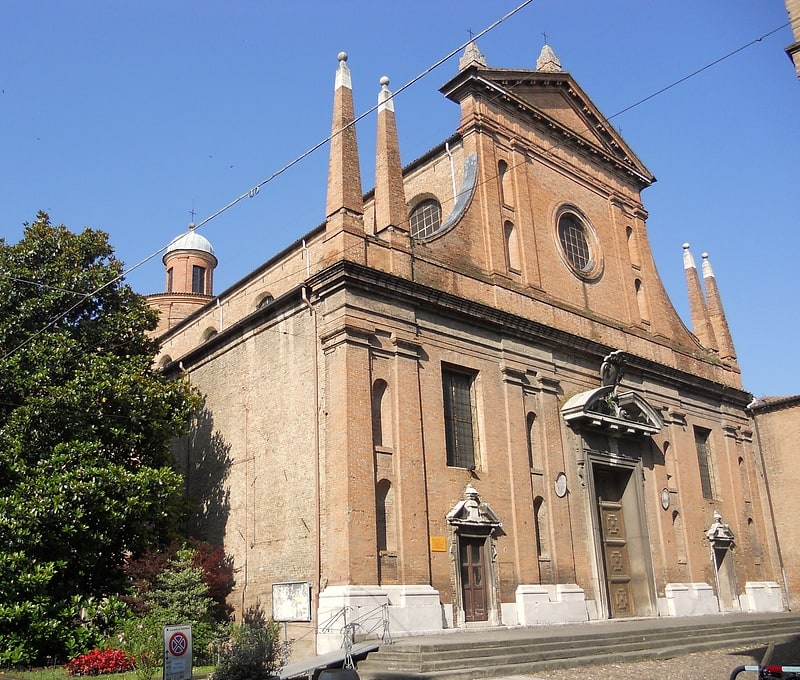
Church in Ferrara, Italy. The Church of San Paolo in Ferrara is located on corso Porta Reno 60, a few blocks south of the Ferrara Cathedral, facing piazzetta Alberto Schiatti. It is considered the pantheon for famous citizens of the city.[19]
Address: Corso Porta Reno, 60, 44121 Ferrara
San Giorgio fuori le mura
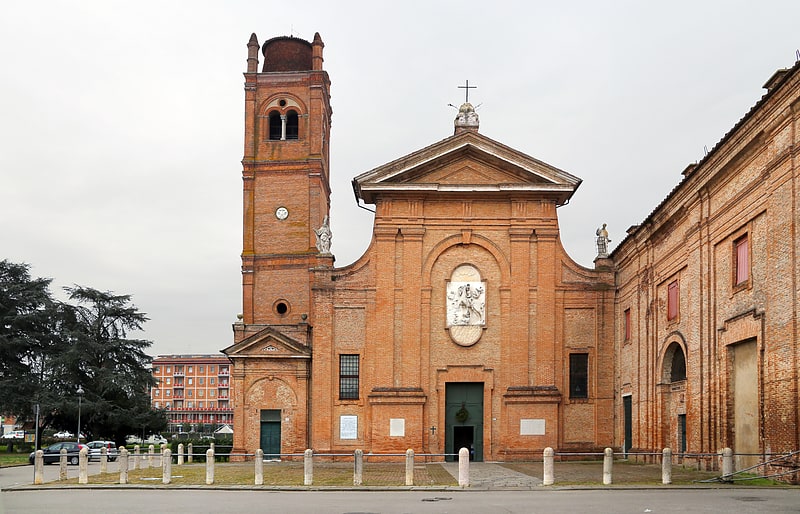
Basilica in Ferrara, Italy. Saint George's Basilica is a Roman Catholic church in Ferrara, Italy. It is called San Giorgio fuori le mura in Italian meaning Saint George's "outside the walls" because it was built outside the city walls, while Saint George's Cathedral was within the city walls. It is the oldest church in the city.[20]
Address: Piazza San Giorgio 29, 44124 Ferrara